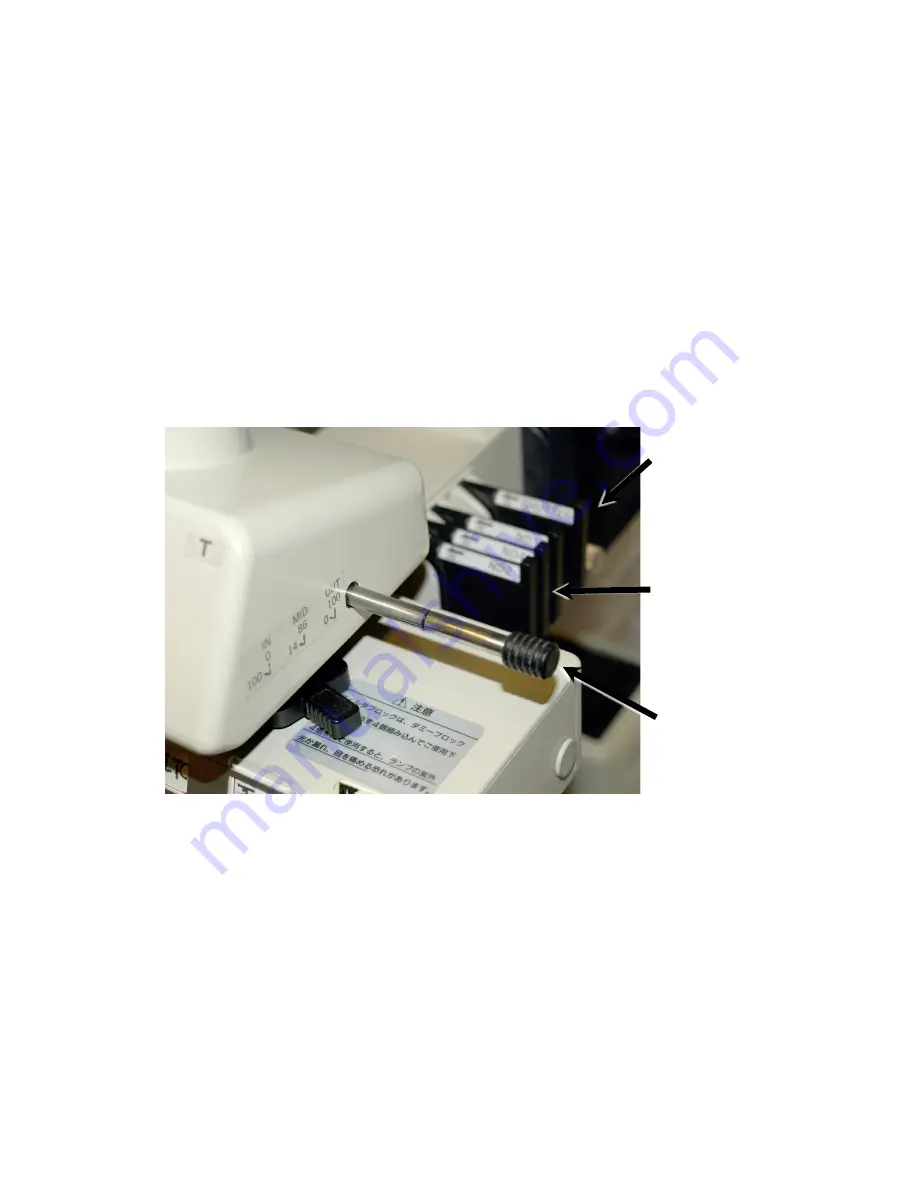
Digital Microsopy Center, University of Washington
July 29, 2016
6
6.
Controlling epi-fluorescence
6.1.
Select filters for specific wavelength bands (“colors”) by the black slider located on the
front of the microscope betwee the eyepieces and objective lens turret;
6.2.
There is only room for 3 filters cubes
6.2.1.
A 4
th
cube requires manually removing filters, usually the Cy5 and DAPI cubes
are swapped, see DMC staff for instruction on changing the 4
th
filter
6.3.
Xenon lamp intensity is controlled by pushing ND filters in or out of the light path
6.3.1.
located behind the trinocular head (Figure 3);
6.4.
Xenon excitation is controlled by a slider located between the ND filter and the xenon
lamphousing (Figure 3)
6.5.
The excitation light is also blocked when the filter slider is in the “DIA” position for
transmitted light (diascopic illumination)
Fluorescence
Shutter
ND Filters
Trinocular
beamsplitter
Figure 3. Trinocular Head and Fluorescence ND Filters























